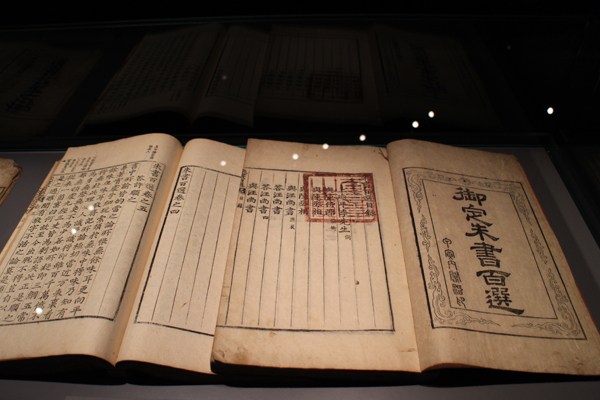Horim Museum homes in on history of Joseon’s printing press

One of the books printed with movable metal type, which is shown at Horim. Provided by the museum
Before Park Byeong-seon (1929-2011), a renowned librarian and historian, discovered “Jikji” in 1972 at the National Library of France, the world believed that Gutenberg’s Bible (printed in 1455) was the first book to be created using movable metal type.
In fact, there are records of books printed with movable metal type that are even older than Jikji - preceding it by more than 100 years, although they have yet to be found in real life.
Against this backdrop, the Sinsa branch of the Horim Museum is holding an exhibition dedicated to books printed using movable metal type during the Joseon Dynasty (1392-1910). Through the exhibition, titled “Movable Metal Types Move Joseon Dynasty,” the museum seeks to explore how the Joseon rulers used such books to solidify their power.
Along with the Leeum, Samsung Museum of Art in Hannam-dong, central Seoul, the Horim - which is 31 years old now - is considered one of the best private art museums in Korea. It is home to some 15,000 artifacts, including 54 state-designated cultural properties. Ancient documents are some of its highlights.
Lee Jang-hun, the museum’s curator, explains that Horim’s collection of books that were printed using movable metal type shows how rulers used literature to propagate Confucian ideologies from China in early Joseon.
One example is “History of China” (1422), a book King Sejong (1397-1450) used during sermons to officials for about 20 years, according to the museum.
However, this changed after the Japanese invasion of Korea, which is known as the Imjin War (1592-98).
“The Imjin War was the war that left a devastating effect on all parts of Joseon,” the museum said. “Destruction of books was significant. It was not just fire but also Japanese looting that destroyed them. Besides books, movable metal type and other printing tools were also destroyed.”
Although printing using movable metal type stopped for some time after the war, it resumed during the rule of Gwanghaegun (1575-1641).
But this time, publications printed using movable metal type were used for cultural renaissance purposes and were most conspicuous during the rule of King Jeongjo (1752-1800).
“Korea has long been a printing powerhouse,” Lee said. “Korea was known for its production capabilities for not just movable types, but also for paper, ink and other materials related to printing.”
The exhibition also features relics and paintings of the times.
BY KIM HYUNG-EUN [hkim@joongang.co.kr]
The exhibit runs until Feb. 28. Entry is 8,000 won ($7.23). The museum opens 10:30 a.m. to 6 p.m. but closes Sundays. For information call 02-541-3523 or visit www.horimartcenter.org.










with the Korea JoongAng Daily
To write comments, please log in to one of the accounts.
Standards Board Policy (0/250자)